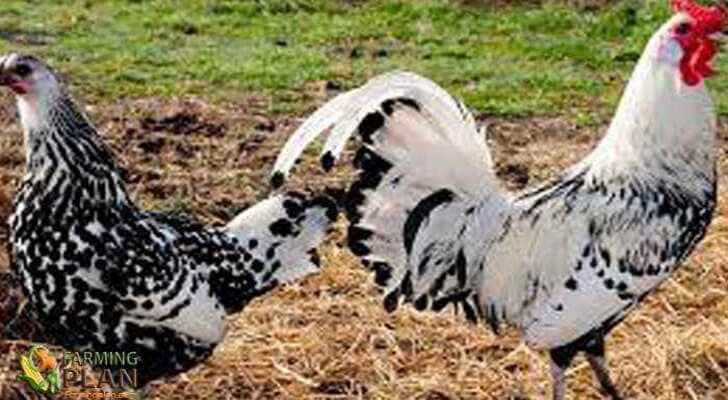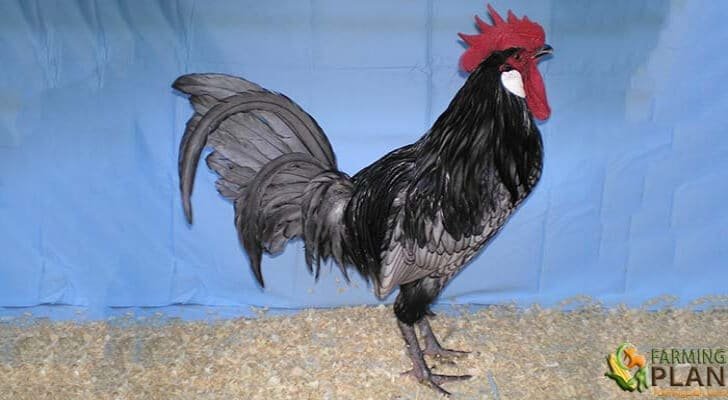If you love geese and the idea of raising your very own herd from home appeals to you, then Bavarian Landrace Goose is the breed for you. This noble bird originated in Germany’s Bavaria region centuries ago, but today it has made its way around the world as a popular backyard poultry breed. With their elegant stature and white plumage with patches of dark gray undertones, these birds are truly beautiful creatures that will surely become a much-loved part of your family if raised well. Starting this type of flock can feel like an overwhelming prospect when first embarking on this journey; fortunately, we have broken down all the steps involved so that anyone can start their own flock successfully! Read on to learn more about how to get started with Bavarian Landrace Gooses.

History & Origin of Bavarian Landrace Goose
The Bavarian Landrace Goose, a special breed of domestic goose native to the region of Bavaria and its surrounding areas in Germany, has an interesting history. It is believed to have descended from the Roman Breese, a type of goose that was very popular in Roman times. While some authors claim it is likely related to breeds like the Tufted Roman, this is yet to be definitively proved. In any case, it is widely agreed upon that the Bavarian Landrace Goose was developed over hundreds of years by efficient selection and crossbreeding among different strains. This allowed them to create the ideal domesticated fowl for their environment, possessing strong flight muscles and a hearty egg-laying capacity – attributes that are prized even today.
Characteristics
The Bavarian Landrace Goose is a unique breed of domestic goose, hailing from the region of Bavaria in Germany. Its striking outward appearance is what sets it apart from other breeds; it boasts a mix of white, gray, black, and brown feathers and an impressively large size. This makes them unmistakable in any crowd! Based on location, head shape, and color, there are variations between the different groups of this species. In addition to their spectacular looks, Bavarian Landrace Geese have traits that make them great for farming. They aren’t too noisy or aggressive like other geese and also produce desirable-sized eggs that are valued for their normal shapes and sizes. While these birds may be a popular choice among farmers due to their attractive characteristics, it’s important to remember that all geese need plenty of love, compassion, and care.
Feed
Feed is an important part of keeping healthy Bavarian Landrace Geese. For the best results, they should be given a diet consisting of a mix of grains, fresh vegetables, and fruit, and moderate amounts of animal protein such as insects or worms. In Germany, the geese are often fed purslane and vetch to supplement their diet in the summertime. This helps to keep them content during the warmer months when natural food supplies may be scarce. To make sure your flock stays healthy and active all year round, it’s important to provide them with a balanced feed that meets their nutritional needs.
Usage
The Bavarian Landrace Goose is an incredibly special breed of goose that is native to the lands of Bavaria and its surrounding area in Germany. In modern times, these majestic creatures have become extremely popular throughout the country for their dual-purpose traits. Not only do they make great show animals due to their beautiful feathering, but they are also a source of delicious meat – making them a great choice for both domestic and commercial purposes. Whether you’re looking for an attractive companion animal or a tasty dinner, the Bavarian Landrace Goose is worth considering!
Special Feature
The Bavarian Landrace Goose is a unique breed of domestic goose that originated in Bavaria and other areas of Germany. Among its many notable features are its capacity for efficient production of edible eggs and healthy goslings, slender shape for easy tackling by predators, and its ability to keep cool in hot weather. These special goos display intelligence as well, adapting to their environment quickly and responding well to human-influenced surroundings. Further distinguishing them from other breeds is their pale colouration making travel through deep water safer due to fewer reflections off their feathers, as well as their inherent friendliness – even after being brought in from the wild. Altogether it is clear why the Bavarian Landrace Goose has become such an important part of German culture!
What You Need To Know Before Starting Your Own Flock
If you’ve ever considered starting your flock of domestic geese, the Bavarian Landrace Goose is an excellent place to start. These charismatic birds are native to Bavaria and the surrounding areas in Germany and boast a variety of remarkable qualities that make them an ideal choice for any beginning farmer or homesteader. The Bavarian Landrace Goose is known for its docile nature, good mothering skills, abundant egg production, and propensity for high-quality meat production. Not only that, but they’re highly adaptive to their environment and can readily withstand harsh weather conditions, making them a great choice not only for their utility but also their hardiness. Whether you’re looking to add diversity to your farmstead or simply searching for a dependable breed of goat, the Bavarian Landrace Goose certainly deserves close consideration!
Understanding Different Avian Breeds
With over 400+ known species of birds, the avian world can be quite a daunting one to explore. To make it easier to navigate, bird species have been categorized into various breeds. One interesting breed is the Bavarian Landrace Goose, a domestic species native to Bavaria and other German regions. This breed’s feathers are primarily white with neat stripes throughout, making them distinct from other goose breeds. Understanding different avian breeds allows people to appreciate the varieties and unique characteristics that come along with each type of bird.
Preparing Your Farm to House Goose
If you want to house geese on your farm, the Bavarian Landrace Goose should be one of the first breeds that you consider. This breed is native to the area surrounding Bavaria in Germany, and it has been bred for a variety of agricultural purposes for centuries. You’ll get an incredibly docile bird with some interesting traits. With enough food and water sources and open space to roam and nest, these birds will thrive in any type of climate and make an ideal addition to any farm. Preparing your farm for their arrival involves more than just housing – make sure that you provide plenty of enrichment and appropriate food, too. By taking the time to prepare your farm properly and becoming educated on Bavarian Landrace Gooses specifically and geese care generally, you’ll soon have a happy flock ready to enjoy your land!
Raising and Caring
Raising and caring for Bavarian Landrace Geese can be a rewarding experience. This special breed of domestic goose is native to the Bavarian region of Germany and is known for its unique markings and docile temperaments. Taking proper care of your geese will ensure they remain healthy and happy. This includes feeding them a balanced diet that includes fresh grass, grains, larvae, and anything else they can scavenge from their living environment. Additionally, as nocturnal creatures, it’s important to give them a safe space to rest during the day to avoid potential predators. With the right care and attention, your family will quickly enjoy having these majestic birds in their lives!
Health Issues
The Bavarian Landrace Goose is an ancient agricultural breed in Germany that can make a wonderful addition to any yard. However, due to their size and hardy nature, they are prone to certain health issues. It’s important for anyone considering owning one of the birds to be aware of these issues so they can spot them early on if they occur. Hoof deformations, egg binding, and occasional feather plucking behavior have all been reported with Bavarian Landrace Geese among other potential conditions caused by food concerns as well as simply growing old. That being said, these birds can still make fantastic pets when their diet, housing, and care are all taken into consideration!
FAQ
What is the rarest goose breed?
The rarest goose breed is the Egyptian goose (Alopochen aegyptiacus). Native to sub-Saharan Africa, this species of goose has seen significant population declines in recent years. Belonging to the family of shelducks and geese, they inhabit wetlands and feed on seeds, grasses, shoots, insects, and small animals.
What is the biggest goose breed?
The biggest goose breed is the African Goliath Goose (Chenon arciropus) which can grow up to 9 kg (20 lbs) in weight and 175 cm (5 ft 8.9 in) in length. The Goliath Goose stands out from other geese due to its distinct black plumage, white chin, and bright orange bill. Native to sub-Saharan Africa, this species of large bird can be found throughout the continent near large bodies of water such as lakes, rivers, and swamps.
How many breeds of goose are there?
According to the American Livestock Breeds Conservancy, there are currently 30 recognized breeds of geese in the world. These include African Geese (Cape Breed, Fulvous Breed, and White Chinese), American Buffs, Canadian honkers, Embden Geese (White and Gray Breeds), Indian Runner Ducks, Saxony Ducks, Pilgrim Geese (Indian Runners), Tufted Roman Geese and Toulouse Geese. There are also several subspecies of each breed.
Conclusion
The Bavarian Landrace is an impressive breed of domestic goose that calls the Bavarian region of Germany home. One of the advantages of keeping geese is that they have little maintenance yet can bring a wealth of benefits to your farm. No matter what type of poultry breeder you are, it’s important to understand the different breeds and be prepared for any issues that may arise with your flock. While there are a few health issues potential owners should be aware of, caring for this majestic bird is a breeze with its great fertility and easy-going temperament. In conclusion, the Bavarian Landrace is an ancient yet versatile breed with a high reputation among farmers and poultry enthusiasts alike – a perfect addition to almost every farm or backyard environment!


